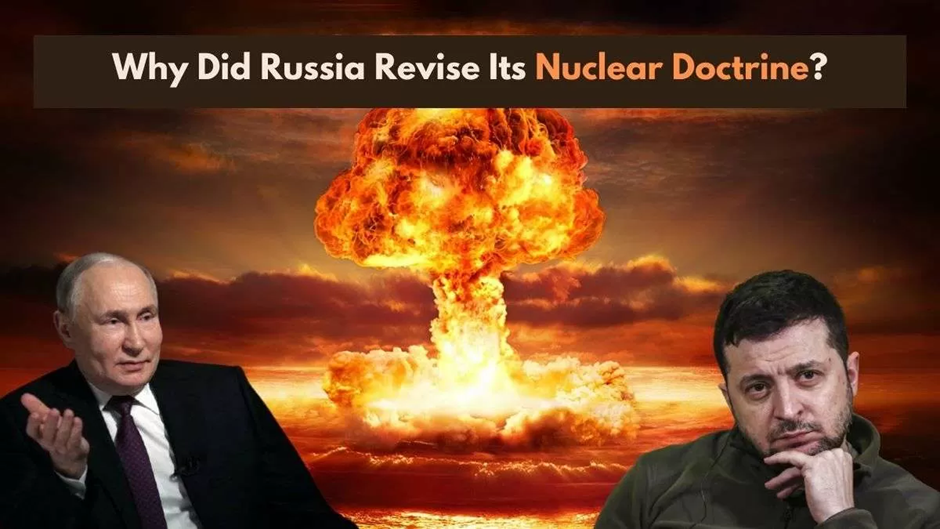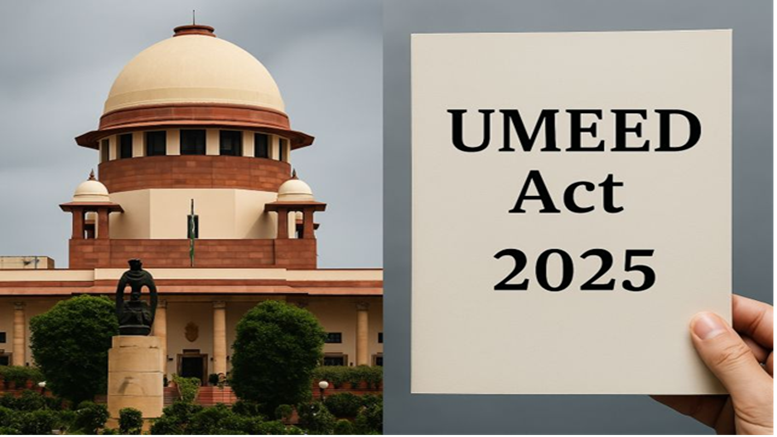- Courses
- GS Full Course 1 Year
- GS Full Course 2 Year
- GS Full Course 3 Year
- GS Full Course Till Selection
- Online Program
- GS Recorded Course
- NCERT (Recorded 500+ Hours)
- Polity Recorded Course
- Geography Recorded Course
- Economy Recorded Course
- AMAC Recorded Course
- Modern India, Post Independence & World History
- Environment Recoded Course
- Governance Recoded Course
- Science & Tech. Recoded Course
- International Relations and Internal Security Recorded Course
- Disaster Management Module Course
- Ethics Recoded Course
- Essay Recoded Course
- Current Affairs Recoded Course
- CSAT
- 5 LAYERED ARJUNA Mentorship
- Public Administration Optional
- ABOUT US
- OUR TOPPERS
- TEST SERIES
- FREE STUDY MATERIAL
- VIDEOS
- CONTACT US
Russia’s Updated Nuclear Doctrine: Key Changes and Implications
Russia’s Updated Nuclear Doctrine: Key Changes and Implications
24-11-2024

- On November 19, 2024, Russian President Vladimir Putin signed a decree updating Russia's nuclear doctrine, replacing the previous one from 2020.
- This new policy explains how Russia sees nuclear weapons and when it might use them, especially in light of the ongoing war in Ukraine.
Overview of the Updated Doctrine
- Putin signed the decree on November 19, 2024, officially updating the nuclear doctrine from 2020.
- The doctrine’s main idea is that nuclear weapons are a deterrent—a way to stop others from attacking Russia.
- The updated version goes into more detail about the situations in which Russia would use nuclear weapons.
- This doctrine helps explain Russia’s plans for its nuclear weapons and sends a message to both friends and enemies about how and when Russia might use them.
- It is especially important because of the current war in Ukraine and the growing tensions with the West.
2. Why Was It Announced Now?
- The decree was signed on the same day Ukraine used US-supplied ATACMS missiles to attack Russian territory for the first time in the war.
- This was a major military move, showing how the war is escalating.
- Some experts say the timing is just a coincidence, as the bureaucratic process for creating the new doctrine likely took weeks.
- Putin had already discussed the key points of the new doctrine publicly in September 2024.
3. Key Changes in the Updated Nuclear Doctrine
- The new doctrine makes it clear that Russia might use nuclear weapons in response to a wider range of threats.
- It no longer says nuclear weapons are only for when Russia’s very existence is at risk, but now includes situations where Russia’s territory or sovereignty (its control over land and government) is seriously threatened.
-
What is new about Belarus?
- The doctrine now says that Belarus is officially under Russia’s nuclear protection.
- This means that if Belarus faces a conventional attack (not using nuclear weapons) that threatens its land or sovereignty, Russia may respond with nuclear weapons.
- Before, Russia only said it would consider nuclear weapons if its own existence was under threat.
-
Nuclear Threats from Non-Nuclear States
- Russia now says it might use nuclear weapons if a non-nuclear country (like Ukraine) attacks it, but with help from a nuclear country (like the United States or NATO).
- This makes it clear that Russia sees support from nuclear powers as a big reason for escalating to nuclear war.
-
Geopolitical Risks
- The new doctrine mentions that Russia could use nuclear weapons if:
- New military alliances are created or if existing alliances (like NATO) move military forces closer to Russia’s borders.
- If countries hold large military exercises close to Russia’s borders, Russia might also see this as a threat and respond with nuclear weapons.
- The new doctrine mentions that Russia could use nuclear weapons if:
4. How the Doctrine Applies to the Ukraine War
- The doctrine says that if a non-nuclear country like Ukraine attacks Russia and a nuclear country supports or helps them, Russia will treat this as a joint attack.
- This could lead to nuclear retaliation from Russia.
- This is especially relevant because the United States has been providing weapons to Ukraine, including ATACMS missiles that are now being used to strike Russian territory.
- The new doctrine also says that if there is a large-scale air attack—with planes, missiles, or drones—against Russia, Russia might use nuclear weapons.
- Ukraine has been using drones and now missiles to attack Russian infrastructure, which could be seen as an escalation.
5. Other Risks and Threats that Could Lead to Nuclear Retaliation
- The doctrine warns that if new military coalitions are formed or existing ones like NATO move closer to Russia’s borders, Russia might respond with nuclear weapons.
- This refers to the growing presence of NATO forces in Eastern Europe, which Russia views as a threat.
- If foreign countries conduct large military exercises near Russia’s borders, especially if they involve many troops or weapons, Russia could see this as a preparation for war and might decide to use nuclear weapons.
- Russia has made it clear that it sees NATO and any countries that host foreign military operations as threats.
- If any of these countries become involved in the war against Russia or allow their land to be used for attacks, Russia could respond with nuclear weapons.
6. Strategic and Global Implications
- The new doctrine lowers the threshold for when Russia might use nuclear weapons, which means there is a greater chance that smaller threats could lead to a nuclear response.
- This increases the danger of a nuclear conflict, especially if the war in Ukraine continues to escalate.
- The updated doctrine is a strong message to NATO and other Western countries.
- It makes clear that Russia might escalate to nuclear weapons if it feels its territory or sovereignty is threatened, or if NATO or other Western powers continue to interfere in the conflict with Ukraine.
- By placing Belarus under its nuclear protection, Russia is strengthening its alliance with Belarus and signaling to Europe that any attack on Belarus will be seen as an attack on Russia.
- This could make tensions with NATO and neighboring countries even worse.
India’s Nuclear Doctrine – Key Points1. India's Nuclear Test and Declaration
2. Establishment of the Nuclear Doctrine
3. Authorization of Nuclear Use
4. The Nuclear Command Authority (NCA)
5. Key Pillars of the Nuclear Doctrine
|
Conclusion
President Putin’s update to Russia’s nuclear doctrine shows a more aggressive approach to nuclear weapons use. The new doctrine suggests that Russia might be willing to use nuclear weapons in response to a wider range of threats, particularly if it sees foreign military activity near its borders or involvement by nuclear powers in conflicts like the one in Ukraine. These changes increase the risk of nuclear conflict and send a clear message to the West about Russia’s intentions in defending its territory and influence. The situation remains highly tense, and the updated doctrine makes it clear that small missteps or provocations could quickly lead to a nuclear escalation.
Must Check: Best IAS Coaching In Delhi
UPSC Prelims Result 2024 Out: Expected Cut Off & Other Details, UPSC Prelims 2024 Answer with Explanation, Daily Prelims Quiz, Daily Current Affairs, MONTHLY CURRENT AFFAIRS TOTAL (CAT) MAGAZINE, Best IAS Coaching Institute in Karol Bagh, Best IAS Coaching Institute in Delhi, Daily Mains Question Answer Practice, ENSURE IAS UPSC Toppers, UPSC Toppers Marksheet, Previous Year Interview Questions, UPSC Syllabus


![img-PSYCHOLOGICAL WARFARE [PSYWAR]](https://i.filecdn.in/755esias/PSYCHOLOGICALWARFAREPSYWAR-1747206772505.jpg)

